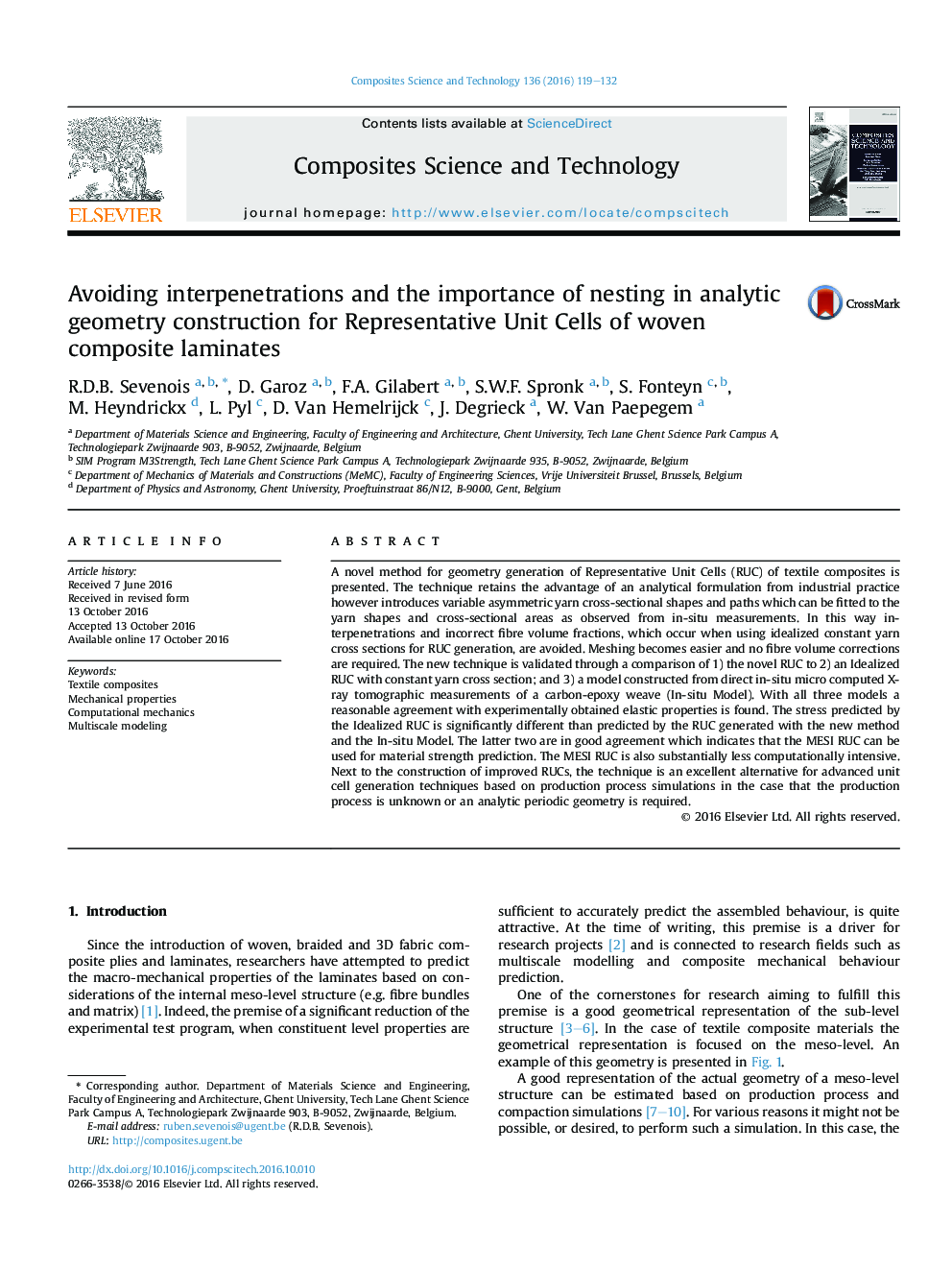| Article ID | Journal | Published Year | Pages | File Type |
|---|---|---|---|---|
| 5022422 | Composites Science and Technology | 2016 | 14 Pages |
Abstract
A novel method for geometry generation of Representative Unit Cells (RUC) of textile composites is presented. The technique retains the advantage of an analytical formulation from industrial practice however introduces variable asymmetric yarn cross-sectional shapes and paths which can be fitted to the yarn shapes and cross-sectional areas as observed from in-situ measurements. In this way interpenetrations and incorrect fibre volume fractions, which occur when using idealized constant yarn cross sections for RUC generation, are avoided. Meshing becomes easier and no fibre volume corrections are required. The new technique is validated through a comparison of 1) the novel RUC to 2) an Idealized RUC with constant yarn cross section; and 3) a model constructed from direct in-situ micro computed X-ray tomographic measurements of a carbon-epoxy weave (In-situ Model). With all three models a reasonable agreement with experimentally obtained elastic properties is found. The stress predicted by the Idealized RUC is significantly different than predicted by the RUC generated with the new method and the In-situ Model. The latter two are in good agreement which indicates that the MESI RUC can be used for material strength prediction. The MESI RUC is also substantially less computationally intensive. Next to the construction of improved RUCs, the technique is an excellent alternative for advanced unit cell generation techniques based on production process simulations in the case that the production process is unknown or an analytic periodic geometry is required.
Related Topics
Physical Sciences and Engineering
Engineering
Engineering (General)
Authors
R.D.B. Sevenois, D. Garoz, F.A. Gilabert, S.W.F. Spronk, S. Fonteyn, M. Heyndrickx, L. Pyl, D. Van Hemelrijck, J. Degrieck, W. Van Paepegem,
